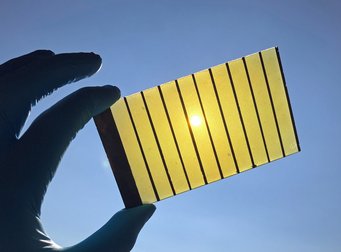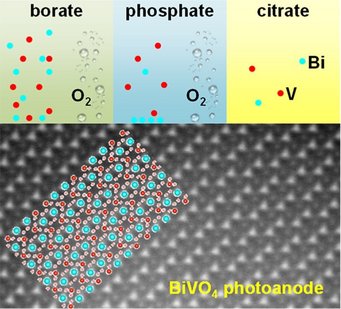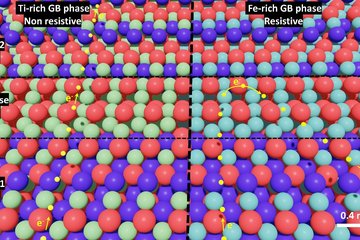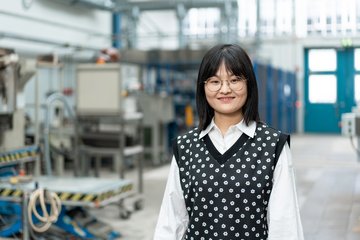Green hydrogen: Using solar energy for water splitting
Max Planck researchers analyse the degradation of photo-electrodes for water splitting and publish their recent results in ACS Applied Energy Materials

Scalable large area BiVO4 photoanode on FTO with Ni current collectors.
A photo-electrode is a solar cell and an electrolyser combined in one material. Solar energy is converted to split water into hydrogen and oxygen, thus producing green hydrogen usable as fuel for various applications. Since the initial developments in the 1970s, the research has gained significant momentum in the last decade, as record efficiencies were reported in various materials systems. “As the efficiency of photo-electrodes continue to improve, the bottleneck has become their limited stability for practical use in industry.”, explains Dr. Siyuan Zhang, researcher and first author of the recent publication. “We designed an illuminated scanning flow cell to be able to analyse for the first time the material’s degradation in operando.” Zhang and his colleagues at the Max-Planck-Institut für Eisenforschung, the Helmholtz-Zentrum Berlin für Materialien und Energie (HZB), the Helmholtz-Institut Erlangen-Nürnberg for Renewable Energy and the University of Freiburg published their recent findings in the journal ACS Applied Energy Materials.
MPIE has a history of developing scanning flow cell (SFC) techniques, started from former group leader Prof. Karl Mayrhofer, now director at the Helmholtz-Institut Erlangen-Nürnberg for Renewable Energy, who combined SFC to a mass spectrometer to study corrosion. “Our latest innovation, illuminated SFC, combines the SFC with a solar simulator, which opens up a whole new dimension to investigate corrosion phenomena triggered by light, termed photo-corrosion.”, states Prof. Christina Scheu, who heads the independent research group “Nanoanalytics and Interfaces” at the MPIE.

The scientists used highly efficient BiVO4 photo-electrodes provided by the HZB. The question was which element from the binary oxide BiVO4 corrodes faster, and how operation conditions can influence their stability. “Our findings show that the electrolyte plays an important role in the stability and nanometre-sized clusters enriched in Vanadium found within the photo-electrode dissolve preferentially.”, explains Zhang, who teamed up with Andrea Mingers from the MPIE group “Electrocatalysis” to perform these experiments. The MPIE scientists combined the SFC with the MPIE’s transmission electron microscopy and atom probe tomography facilities to correlate the structural information with the material’s chemistry. In close interaction with Dr. Baptiste Gault, head of the “Atom Probe Tomography” group and Se-Ho Kim, PhD researcher in the group, the scientists were able to use aberration-corrected electron microscopy and atom probe tomography for the first time on this beam-sensitive materials.
This combination of different methods provides a comprehensive view on the corrosion of the photo-electrodes. The scientists are now heading to design catalyst coatings to protect the photo-electrodes from the electrolyte and thus inhibit their degradation. Being able to increase the life time of photo-electrodes paves the way for their use in industry and thus for a sustainable hydrogen production.
Author: Yasmin Ahmed Salem













